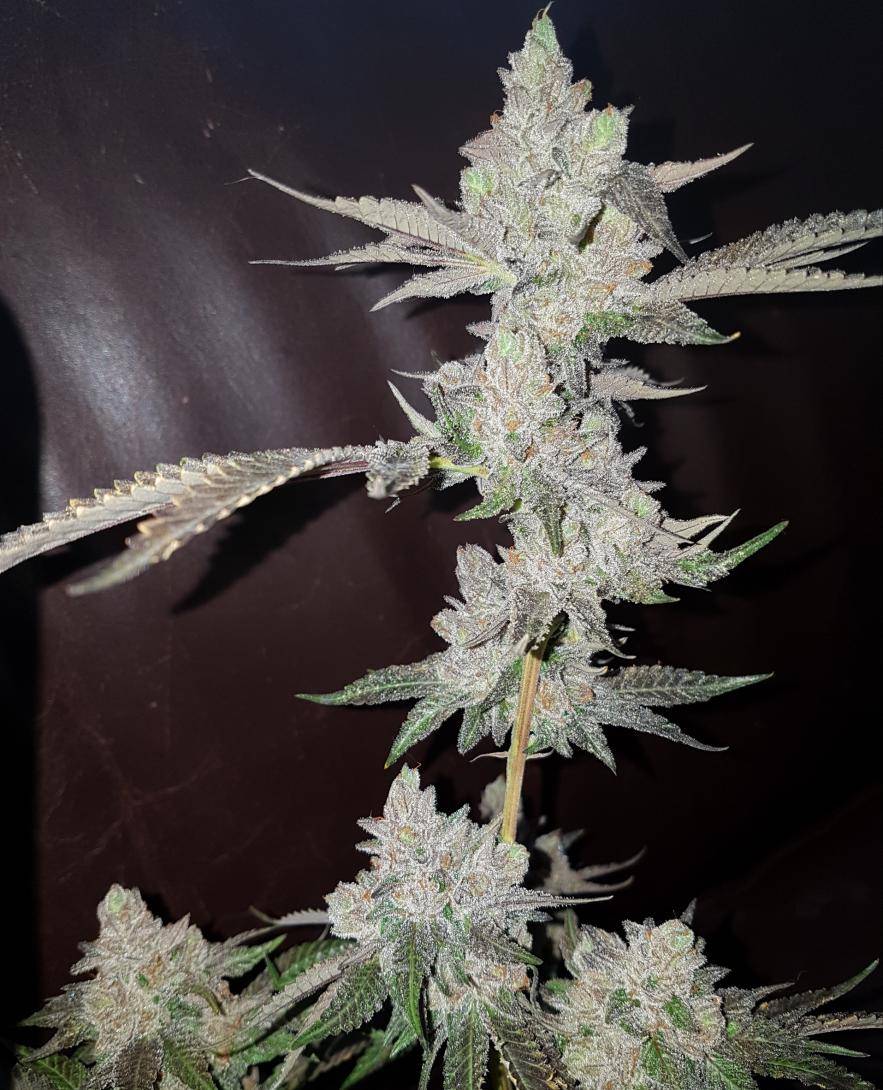Sip grown
More Cowbell - Bodhi seeds

More Cowbell - Bodhi seeds
thats a good end goal.
I am convinced. It looks like the bed of perlite "wick" just needs to stay wet and be in contact with the bottom of the soil-only bag. A 1-2" layer of perlite on the bottom of my totes, on top of a later of fabric to keep the perlite out of my grid, keep the grid flooded wet by the water level in the control box. The only thing is, the soil won't be that deep. But the bag sitting into the tote can go up a little in height above the tote.
This will work in my system because I can move the plants in the bags from my veg/training tent to the totes in the flower tent, that are set-up and working with a SIP system already. Drop the low scrog frame on top, and let them stretch up to the higher screen. Come chop time, I will remove the bag of used soil and deal with it. The pearlite wick should be OK for re-use, it sounds like. No leaching of the soil into the water, no nutes needed if the soil is growing OK, automatic, easy peasy. Moses Wellfleet had me at "foolproof". I still have my manifold of rings I can use to top dress anything if needed.
Thanks!
All I need to do to convert my system to SIP, is raise the center bucket that the totes were going to drain into, and use bulkhead fittings so the center bucket hoses are water tight. The waterline will be determined and a drain tube installed onto the center bucket, that flows onto the return catch pan, which has a bilge pump standing by, ready to return overflow water to the reservoir. Pump from the reservoir into the center bucket with a timer, and the system circulates back to the reservoir, keeping the SIP water level up, until the timer says to stop the cycle. At that point the center bucket drains down as the plants drink, and the SIP level goes down with it. The wick will only be 1 1/2" thick, and I figure that the wick will go dry pretty quickly.
[URL=https://www.icmag.com/ic/picture.php?albumid=85372&pictureid=2113639&thumb=1]View Image[/url]
The bucket has 3" air inlet holes to gather the low air entering the tent from the return, and blow it upward where the heat from the lights is the worst. Since there is water in the bucket, it helps add humidity.
Anybody use these? Moisture readings from the next room. One of my goals is to not have to open the tent when it is flowering, but I will need to - for the light adjustment, as the plants grow.
https://www.amazon.com/gp/product/B07CJYTSH1

Thailer, I got a couple questions. What size of pots were you in before the switch. Also how do you think 55 gallon tough totes would work? I would want to connect them all and you said you you should only connect 6 of the 27 gallon totes so I imagine you would only want to connect about 4 of the 55 gallon totes?
 Welcome to ICmag!!
Welcome to ICmag!!I kinda made a joke with the Buildasoil guy about going to the drugstore and tossing a handful of pro-biotics in the soil, since it wasn't heating. He wants only their bacteria in there, to keep the bugs from fighting. Shit, I'm using pond water to wet the soil, probably full of bugs.
Speaking of wetting, there is confusion in my head. The soil guys say to wet it until a few drops are present when you squeeze a handful. I have mine just a tad dryer than that, as it is still absorbing the water. It does have a nice spongy feel and sound. The 9" blumat reads 17, which is supposed to be soggy. How do you judge the wetness, besides weight?


